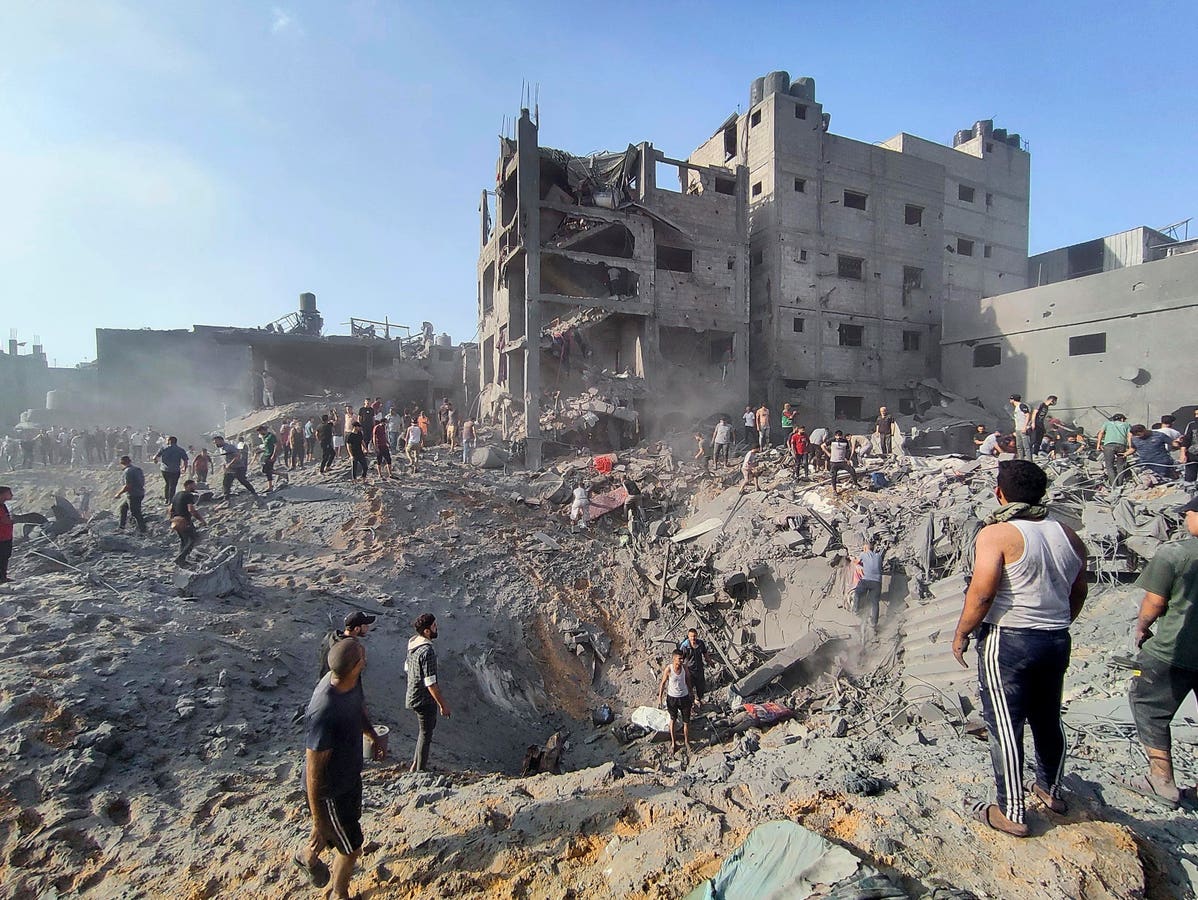Israel’s strike today in Jabaliya, northern Gaza, has given rise to a fresh crop of arguments about the proportionality of its actions in Gaza. The strike killed a Hamas commander who helped plan the October 7 massacre of 1400 Israeli civilians, along with militants from the Central Jabaliya Battalion, and an unverified number of civilians. The Hamas-controlled Gaza Health Ministry claims that the strikes killed and wounded “hundreds”; the New York Times
NYT
This article takes no position on the legality of Israel’s strike in Jabaliya. Not enough information is known at this time to make such a determination—for this or most other Israeli strikes in Gaza this month. The article aims to shed light on the calculations that military lawyers in states bound by the law of war—including Israel—make when striking targets in an extraordinarily complex combat environment.
Urban warfare is one of the most difficult and dangerous types of warfighting—not only because of the risks to soldiers fighting terrorists in a maze of underground tunnels. An equal or larger challenge lies in the difficulty of minimizing incidental injury to civilians and collateral damage—cold, clinical terms for death and injury of civilians and civilian property damage resulting from war. In a densely populated place like Gaza, If Israel conducted every strike lawfully and with all of the military precision that technology allows, many horrible deaths of innocent civilians would still occur. The law of war recognizes that risk to civilians and civilian property in war are both inevitable and a tragedy. The law seeks to mitigate this risk while recognizing the harsh realities of war.
Proportionality requires military commanders to balance two incommensurable concepts: expected military advantage and potential damage to civilian life and property. The principle of proportionality prohibits attacks that damage civilian life or civilian property when they are excessive in relation to the concrete and direct military advantage anticipated from the attack. A commander, then, cannot be indiscriminate about their target. The commander must know what military advantage they expect the attack to achieve and seek to avoid or mitigate incidental civilian injury and property damage that are excessive considering the advantage to be gained. Proportionality implies an obligation for the commander to abstain from an attack if they deem incidental civilian injury and civilian property damage to be excessive.
Proportionality is violated only when incidental civilian injury and collateral damage is “excessive.” The term “excessive” is the crux of the commander’s balancing test and remains undefined in law. Belgium’s 2009 military manual offers the example that bombing an isolated fuel tanker in the middle of a densely populated city would be excessive. Canadian military manual notes that an airstrike against an ammunition depot while a farmer was plowing a nearby field would not be excessive. Rarely, if ever, does the calculation boil down to a simple numerical equation.
Military commanders, advised by their lawyers, must apply the principle of proportionality to every strike. Proportionality is assessed based on the information a commander has at the time of the attack itself. The principle recognizes that a commander makes decisions with incomplete information, under time and operational pressure, and within the fog of war. It requires that the commander makes a reasonable decision—not one that is always correct.
Proportionality is a challenging principle to understand—not only because of semantics, but because of the cruel reality of war. A legal academic discussion of a balancing test will give no comfort to a bereaved mother in Gaza. An attack can be lawful even if a reasonable commander knows that civilians will suffer and die, and that city blocks will be destroyed—if they apply the appropriate balancing test. And an attack can be lawful and still immoral—or made to look that way on social media. Yet despite these horrible truths, proportionality does put an important constraint on military operations that reduces human suffering.
More than a mere social media slogan, proportionality is a fundamental principle upon which all states in the world have agreed via the 1947 Geneva Conventions. The Conventions were signed in the wake of World War II when the world decided to say “Never Again” to carpet bombing, indiscriminate use of nuclear weapons, and other horrors wrought by that war. Reducing the principle of proportionality—and the excruciating decisions of military commanders—to a social media slogan demeans the core principles that keep us from the evils of the past. War will never be humane. But understanding and applying the law of war can lead to less suffering—and eventually, a better peace.
The author has taught the law of war to US and foreign military officers for eight years at the National Defense University and Marine Corps University. Her views are her own and do not represent those of those universities, US Department of Defense, or any other part of the US Government.
Read the full article here





